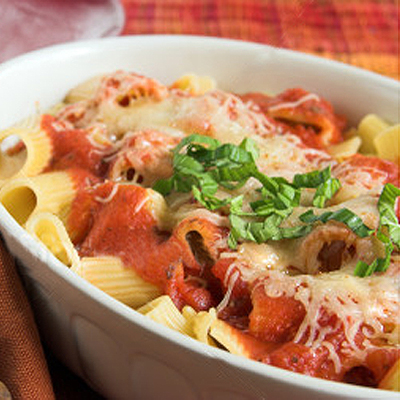7 Ways to End Picky Eating
Strategies for raising an adventurous eater (that will eat at least some of his veggies) I wanted my kids to be good eaters. It mattered quite a lot to me, in fact. But I wondered, during the breast-pump-and-jarred-baby-food days, what I could do to help them grow up liking not only broccoli and oranges but also foods like salmon, fava beans and goat cheese, as I do. Or was appetite one of those things, like personality and hair color, that's simply ingrained? I wish I could say that I was motivated purely by concern for their health, but that was only part of it. I also wanted them to grow up open-minded about new experiences, starting with ones that arrive on a plate. Mostly, I was motivated by self-interest. I love to cook, and longed for eager guinea pigs at the table. I had spent too many years living alone and attempting to divide recipes in fourths, or eating leftovers night after night. What joy to march boldly into a recipe that "serves six"! Joy, that is, as long as my diners wouldn't stick out their tongues and yell "yuck!" So I did some research, watched friends with their kids and talked it over with my husband. He and I have evolved a set of seven strategies for raising an adventurous eater, or at least turning a cautious eater into a more adventurous one. Well, they've worked for us. At least for now.
1. You're not a short-order cook. At mealtime, we tell our three kids, "This is what's for dinner. If you don't like it, that's fine; you don't have to eat it. But there isn't anything else." They can decide for themselves whether to eat the food in front of them or wait until the next opportunity. Of course, it helps to consider their tastes when planning a meal, making sure that—in addition to the new recipe you're trying—at least one or two of the other offerings are tried-and-true favorites. It was the American Academy of Pediatrics (AAP) that actually gave me the courage to follow through with this idea. Around the time my firstborn, George, was learning to say "No!" I came across this passage in its book Guide to Your Child's Nutrition: "Children will not become ill or suffer permanently if they refuse a meal or two, but parents sometimes act as though youngsters might shrivel up and die." If you've been giving your child alternative entrees up until now and she threatens to go on a hunger strike rather than eat the family meal (as some certainly will), I suggest you try strategies 5 and 6. 2. You can spice things up. True, kids have delicate taste buds, but that doesn't mean they need to be served a steady diet of pasta with butter (even if that's all they ask for). In fact, it's all the more reason to give them flavorful food; children really notice when something tastes good because of their naturally sensitive palates. I expected my kids to shun garlic when they were babies, for instance. And surely, I thought, they'd hate olives. But a little garlic makes so many things taste better that even a 1-year-old can enjoy the difference (there's a good chance he's already sampled it in your breast milk anyway). Olives can be wonderful, too, if they're the mild, fragrant kind marinated in oil and herbs. I do go out of my way to avoid very spicy foods and funky, stinky things like blue cheese. But other than that, I cook the same kinds of meals for my family that I used to cook for friends. 3. Give vegetables the hard sell. This food group is traditionally a mom's biggest hurdle, and it's easy to understand why. Boiled and salted, vegetables are typically nothing more than a good-for-you side dish, dumped by the ladleful alongside things that actually taste yummy. No wonder getting kids to eat them requires begging and threats, tactics that quickly backfire. Because once your kids realize that you really, really want them to eat vegetables, refusing to do so becomes a power struggle that they will always win. I've had success using recipes that integrate vegetables into delicious main dishes, such as eggplant layered with spiced ground lamb, smashed peas and rice and sautéed zucchini with tomato and basil. And I've made lots of vegetable-based sauces for pasta. Another trick: On the nights that I do serve vegetables as a side dish, I'll often place them on the table first, when my kids are the hungriest. Usually they've wolfed them down by the time the rest of the meal arrives. 4. Try to eat dinner together. You've heard all the research: Kids who eat dinner with their parents have healthier diets, better vocabularies, get better grades, blahblahblah. I'm not going to guilt-trip you about needing to do it every night. But do try to pull it off when you can. And be realistic with your expectations. Little guys simply can't sit at a dinner table for very long. A toddler may last only five minutes, and 15 minutes from a 4-year-old is a very good thing. So that our children appreciate family dinnertime without feeling coerced into it, here's what we decided: If one of our two bigger (out of the high chair, that is) kids is finished eating his dinner, he can leave the table, but he can't hang around nearby, playing and talking and distracting the rest of us. He has to go into the living room or upstairs to his room and entertain himself. Usually, it turns out that what he really wants is our company and attention, so he'll stay in his seat. My husband and I have our own rules to obey, too. We don't answer the phone or watch TV during dinner. 5. You have to try one bite. And no more, if what your child tastes makes him or her gag. Like most parents, I have childhood memories of being forced to eat foods that turned my stomach, and I don't want to subject my kids to that. Some moms I know are so worried they won't be able to tell the difference between genuine revulsion and mere stubborness that they let their kids off the hook too quickly. But it has actually turned out to be easy to tell when a dish is truly nauseating to one of my kids. I'll quickly let him know he doesn't have to finish, and praise him for giving it the old try. 6. If all else fails, use bribery (and don't feel guilty). My kids may now be more open-minded about food than most, but that doesn't mean they always like what I've cooked. Heck, I don't always like what I've cooked. But eating it isn't torture. If they start poking food around on their plates, eating a bite of this but none of that or acting stubborn or sulky, we resort to the same bag of tricks that parents have used for generations: l No dessert if you don't eat a fair amount of dinner. l No seconds until you try a little of everything—but then seconds can be whatever part of the meal you like most. l Or, the most mysteriously effective one of all, "I see you're not eating your chicken. Mind if I give it to your brother?" at which point, some inexplicable competitive urge kicks in, and the petulant child turns into a food-eating dynamo and polishes off everything on his plate. 7. Save room for dessert. I can't lie: Ice cream often tastes better than anything on the planet. Life has its share of sweetness and serendipity, and mealtime should, too. Celia Barbour is the food editor of O: The Oprah Magazine. She lives with her family in Garrison, NY. Retrieved from: www.goo.gl/084lSe
|
|

















